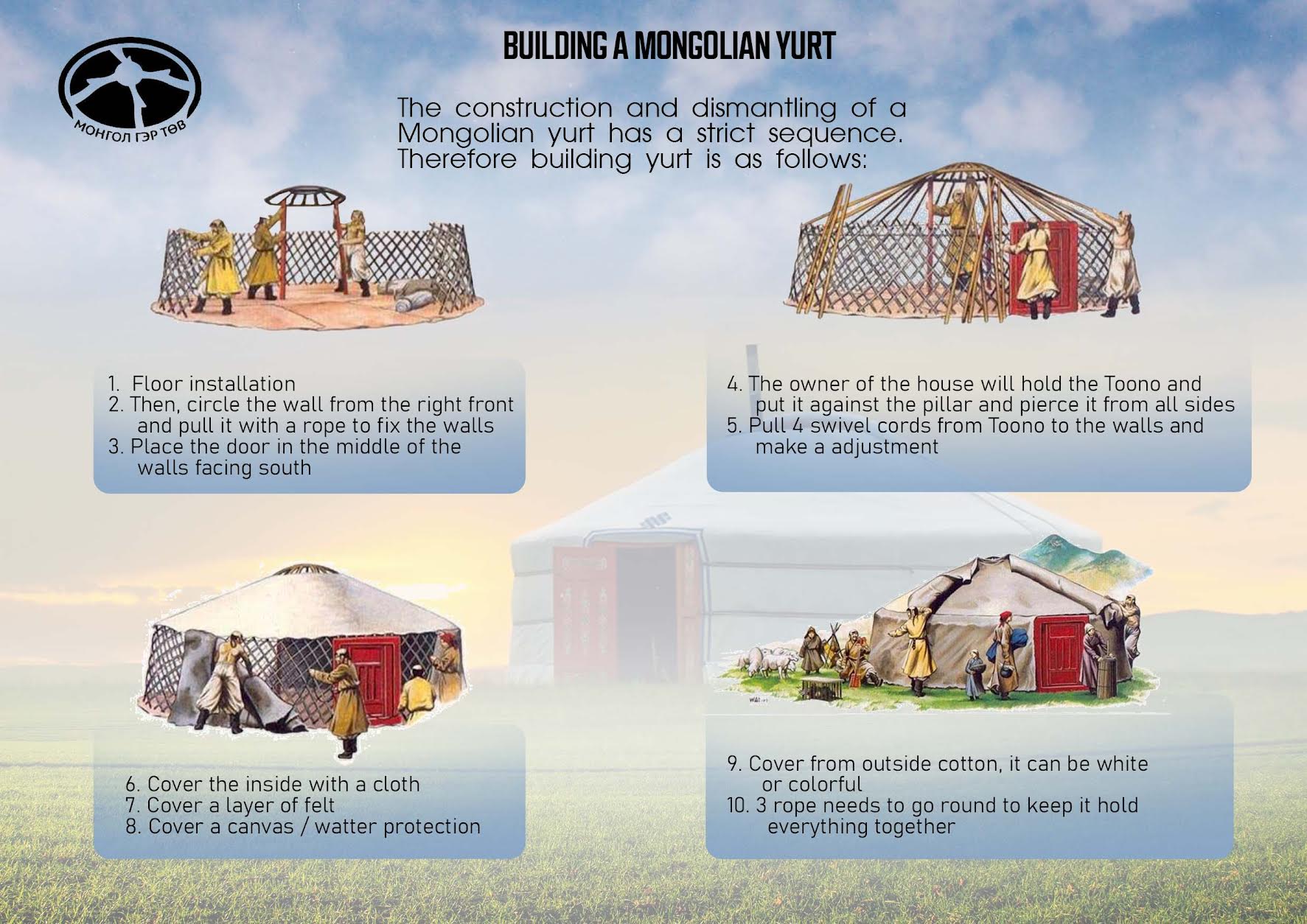Yurt Building
Construction
The lattice of a traditional yurt is divided into sections, called khana. Each khana is a collapsible series of crisscrossed wooden poles. The poles are made of light wood, such as willow, birch, poplar, or even bamboo. Khana are attached to each other with ropes made of leather or animal hair.
The central part of the roof is called the Toono. The Toono is a ring to which roof poles, called uni, are attached. The toono’s pattern of wood, reeds, or fabric can be handed down for generations. The crown is partially open, allowing air to circulate and a chimney to penetrate the structure. and the columns that support the heavy toono are called bagana, mostly yurt has a 2 bagana, bigger yurt needs 4 bagana.
Yurt communities are often herding cultures, and the felt that covers the yurt is usually made of wool collected from domesticated sheep, goats, or yaks. Most yurts have two layers of felt, and, often, an outer layer of waterproof fabric such as canvas. A wood-burning iron stove sits in the middle of a traditional yurt, with a long chimney reaching up past the roof.
